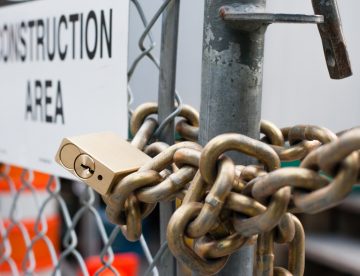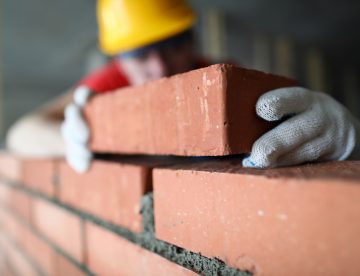
Research shows that nearly four out of five tradespeople in the UK have experienced tool theft with the estimated cost to the industry coming in at a staggering £2.8 billion.
Because the victims of tool theft are often self-employed, the impact of their individual losses on them, their families, livelihoods and mental health can be devastating. However, the criminals targeting construction sites and trade vans rarely stop to think about such things and so it’s vital that construction companies prioritise and put every effort into site security. In this week’s blog, we’ll look at how big this problem has become and what you can do to protect your site.

Twelve members of Sheriff’s top team have just returned from a five day trip to Dubai, a reward from the company for all their hard work and loyalty over recent years!
Including Company Directors, Contract Managers, Site Managers and Foremen, the team were treated to a stayover in a five star hotel plus an itinerary of site seeing trips and meals out.
Find out more about what they got up to in this week’s blog.

In recent years, it’s not often been possible to talk about the supply of any building materials without including the word ‘shortages’.
Finally that seems to have changed as it’s now being reported that, with a slowdown in housing developments, stocks of bricks and some other construction materials are on the rise.
In this week’s blog, we’re reporting on what industry leaders are saying about product demand and supply in the sector.

In a single year, the UK generates 67.8 million tonnes of non-hazardous Construction and Demolition waste, a figure that represents 62% of the nation’s total waste output.
This waste is made up of all kinds of products – concrete bricks, tiles, ceramics, insulation, wood, glass, plastic, bituminous mixtures, cement, gypsum, paints, varnishes, soil, stones, coal, tar, cables, pipes, adhesives and sealants – to name a few!
While much of this is recovered, taking action to reduce construction waste has proven to be good, not only for the environment, but also for business. Keep reading to find out more…

The cost of living crisis is something that’s repeatedly filling our news streams with reports of how this is affecting people, businesses and whole industries.
Now, it has been revealed that, during 2022, high levels of inflation on building materials has made its mark on the UK’s construction sector – taking the total cost of construction output for the year to a record level of £204bn.
Read on for more on this story as well as what the experts are predicting for 2023…

Having a well-functioning team is one of the most important factors which the success of any construction project relies on.
It’s how people from all kinds of backgrounds, with different skills and experience, find a way to work and cooperate with each other to reach a common goal; and how they maintain high levels of productivity, alongside excellent quality control and safety practices.
However, achieving and maintaining great teamwork does require some effort so, in today’s blog, we’ve got five tips for you.

Tools and equipment are essential to the effective running of any construction site but, because they are used so much, they can suffer a lot of wear and tear, become damaged and eventually be unusable.
However, with proper care and maintenance, the lifespan of your tools and equipment can be extended and that’s good news for four reasons: 1) Better quality tools means better quality work; 2) It reduces costs related to repairs or replacements; 3) There will be fewer accidents/ injuries from faulty equipment; and 4) It’s better for the environment.
With so much to gain, in this week’s blog, we’re sharing some top tips for how to protect and maintain those tools.

Sheriff Construction is delighted to announce that we’ve just secured our biggest brickwork contract to date. Valued at just over £6.1m, the deal will see our team supporting a major UK housebuilder at 5-acre regeneration site in Woolwich, London.
This is a significant win for Sheriff Construction as it cements the strong relationship we’ve built up with this client (who we’re not naming right now due to our protocols around confidentiality) and will provide our team with at least 2-years’ worth of secure work. The contract is also among the first to be secured since our company restructured, meaning the job will be managed through our sister company, Sheriff Brickworks. Read this week’s blog to find out more.

A new technology, using flying robots (drones) that work cooperatively like bees, might soon be something we see in use on a construction site.
Imitating some of the methods used by nature’s airborne builders, the technology (which has so far been tested in a lab) could ultimately be used for manufacturing and building – particularly in difficult-to-access or dangerous locations such as tall buildings or help with post-disaster relief works.
Take a look at this week’s blog to find out more…

